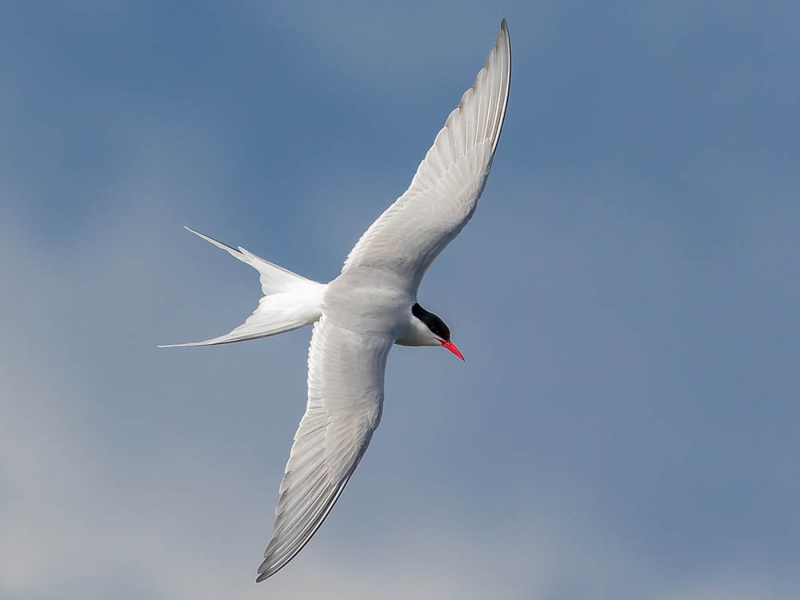Arctic Tern
With their yearly migration from the Arctic Circle to the Antarctic Circle, arctic terns hold the world record for the longest migration of any mammal. One determined tern traveled approximately 60,000 miles - more than twice the diameter of the planet - in one journey. Instead of flying north or south, terns take a circuitous route over continents and oceans to accumulate all those kilometers.
These little seabirds were designed from birth to travel great distances. Arctic terns can float through the air on a breeze thanks to their small, light body, short legs, and narrow wings. They have bright red feet and beaks, and their bodies are coated in gray and white feathers, with a black feather crown perched on each bird's head.
As they go to every ocean and every continent, Arctic terns can be found almost anywhere. They spend many months traveling to the Antarctic Circle each year after breeding on the tundra and coasts of the Arctic and subarctic regions of Europe, Asia, and North America. Colonies are the groups in which Arctic terns migrate.












